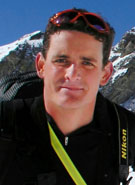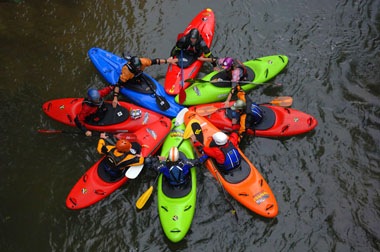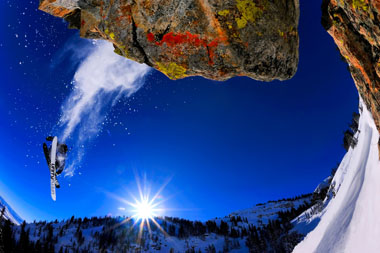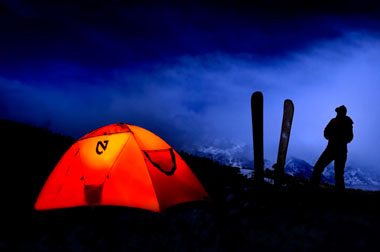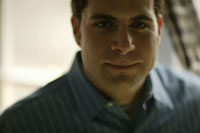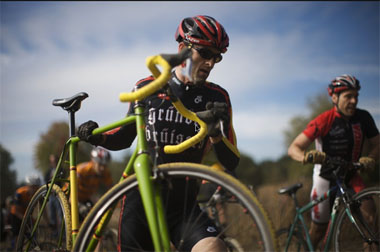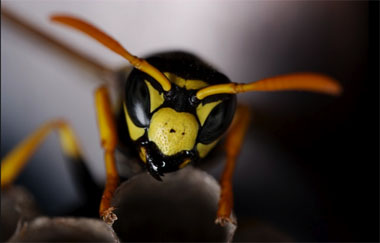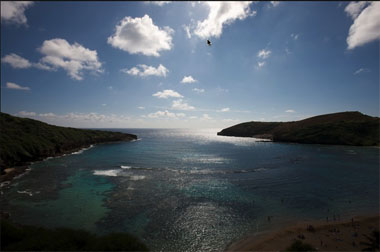Pro Photographers Share Their Most Guarded Digital Secrets
Great photos are made, not taken. Creating the perfect image requires a skill set that includes a deep understanding of one’s gear, the light, and the ability to think about what story you want the photo to tell and how to communicate that story through a captured moment in time. Tremendous patience, physical flexibility (a photographer spends a lot of time pretzeled into odd positions to capture the perfect angle), and an ability to think lucidly before dawn (can’t miss that golden light) are also essential.
Most photographers would now agree that proficiency with photo-editing software is also a critical skill. So we asked six photographers to tell us about their favorite image processing applications and add-ons as well as share their best tips for making and digitally refining images.
Lucas Gilman travels the world in search of untouched places and wild experiences, capturing images ranging from kayaking in India to backcountry skiing in South America. His work is often seen in National Geographic, Sports Illustrated, ESPN Magazine, ESPN.com, Men’s Journal, National Geographic Adventure, Outside Magazine, Men’s Fitness, Maxim Germany, FHM Australia, USA TODAY and the New York Times. Lucas recently won the “2008 American Photo Emerging Photographer Award” sponsored by Apple Inc.
Preferred Post Processing Applications: The majority of my post processing work is done in Adobe Lightroom 2. I use Adobe Photoshop CS4 for small detail work and Nikon Capture NX for certain images.
Favorite plug-in filters/scripts/actions/etc:
Nik Viveza: Amazing color and contrast control without the need for masks. It helps make even a day with the worst light look good with just a few sliders and a couple of clicks.
Nik Silver Efex Pro: The best black and white conversions in the industry, allowing total control and creativity without layers, masks and hours of tedious Photoshop work.
Nik Color Efex Pro: Amazing ability to enhance and correct colors without masks.
OnOne Software Genuine Fractals: Allows me to deliver perfect images that have been resized on demand to epic proportions.
Which filters do you use the most in the Nik collections? In Nik Color Efex I really like the "Brilliance and Warmth" filter. It allows me to add saturation and warmth in a natural way to produce really pleasing images. I also really like the "Tonal Contrast" filter, it allows me to accurately adjust contrast in many areas of the image without masking. In NIK Silver Efex Pro I like being able to click through all the film type options within the black and white conversion filter, being able to control grain and contrast to show every detail that I want is really cool!
General Filter Tips: Take your time, play around and check out what each filter can do for you. You will be amazed at all the variations you have the ability to produce with some creative thinking.
Favorite Photography Tips: Find your background and then wait for your action to come into the frame. Shoot early and shoot late when the light is good. And take hand sanitizer to Third World Countries -- you will make better photos if you are not sick in bed.
Where do you print your work? Printroom.com
Preferred Gear:Photography: Nikon D3X, Nikon D3, Nikon D700, Nikon 14-24mm AFS f/2.8 G ED, Nikon 24-70/2.8G Autofocus-S, Nikon 70-200 mm f/2.8G ED-IF AF-S VR Lens, NIKON 300mm AF-S VR f/2.8G IF-ED, Nikon AF-S Teleconverter TC-17E II, Nikon 400mm AF-S VR f/2.8 IF-ED, Nikon SB900 speedlights, Honl professional Light Modifiers (grids, snoots, gobos for Nikon SB900’s).
Backup and image storage: 16GB Lexar Professional UDMA 300x CompactFlash, Lexar Professional UDMA FireWire 800 Readers, DroboPro (Studio), Western Digital MyPassport Studio Edition 500 GB DRIVES (travel)
Computer: Mac Pro 8-core 3.0GHz Intel Xeon + 8GB Crucial RAM (Studio), MacBook Pro 2.4GHz 4GB Crucial RAM (travel).To see more of Lucas’ work, visit his website.
David Schlossis the director of the Aperture Users Network and MacCreate.com. A photographer for more than two decades, David specializes in adventure sports, travel, lifestyle and hyper-macro photography. He is the author of two books on photography and teaches workshops internationally.
Preferred Post Processing Applications: I do about 95 percent of my work in Aperture, with occasional work in Photoshop CS4, Illustrator CS 4 and Painter.
Favorite plug-in filters/scripts/actions/etc:
NIK Silver Efex Pro: This is by far the best black and white conversion tool ever made.
Imagenomic Portraiture: After spending countless hours retouching portraits for commercial use Portraiture has been a godsend. It selectively retouches images without having to create complicated masks, it can tell the difference between facial texture and things like hair and makeup.
Picture Code’s Noise Ninja: The industry standard for noise reduction. Getting rid of noise from a high ISO or low light shot doesn’t get any easier--or better--than this.
Which filters do you use the most in the Nik Silver Efex collection?: I tend to be drawn to the filters that provide the grainy black-and-white experience I used to get from darkroom techniques. The film simulations for things classic 1600 ISO film stock are great. While it doesn’t feel exactly the same to me (there’s just a quality of black and white high-ISO film that’s hard to duplicate) it brings back much of that quality of playfulness and artistic expression of the darkroom.
General Filter Tips: Digital filters are best used like a spice. A little bit can transform a creation from mundane to extraordinary, but used too heavily it will overwhelm the creation. And there’s no filter that’s going to save an out of focus image so work to get the image right in the camera first.
What tips can you share with us about working in Aperture: In the 90’s there was almost a mandate that "artistic" photos had to be processed and highly-filtered. A lot of simulated cross processing work and bleach tones. For many photographers the image in-camera was simply a jumping-off point for a creative journey. That’s fine and it produced a lot of great looking images, but it can only go so far.
With the advent of Apple’s Aperture, and the focus (pardon the pun) on bringing out the best of an image, I’ve really rededicated myself to shooting the best possible image in the camera and just bringing it back to the way I saw it in my mind when I shot it. So filters for me are largely about bringing images back to reality, or at least the reality that I had envisioned.
The really powerful adjustments in Aperture allow me to do a lot of things I used to do in filters -- adjust levels, saturation, vibrancy, sharpness. I take my images and round-trip to a plug-in when I need to make that final little creative tweak to make an image mine. Take the black-and-white conversions possible with Silver Efex Pro -- Aperture is not designed to simulate a film stock, but the ability to take an image and go right into a plug-in and still manage it in Aperture allows me to make a version that replicates the techniques I used to use, with today’s tools.
Favorite Photography Tips: The best thing I’ve ever heard about photography came from photographer Jay Maisel. Taking the expletives out it boils down to "you can’t take a picture if you don’t have a camera." One thing I learned from my father, a commercial shooter, was to forget about the automatic settings and spend days walking around with camera in manual mode, changing the f/stop and shutter speed by feel. Meter once in the morning and see if you can tell how many stops lighter or darker your subjects move from there. As a result, I often think of things in terms of stops of light. I’ll turn on a bedside lamp and think of how many stops lighter the room got. It’s really a great way to become one with your camera.
Do you still shoot with film? I have not shot a piece of film since 2002. The convenience, speed and ecological benefits of working with digital have outstripped all the reasons I shot film.
Where do you print your work? At home, on my HP B9180 and a HP Z3100. I’ve also used the site ImageKind.com when I want to get output printed, framed and shipped. They do great work.
Preferred Gear:Photography: Canon 1Ds Mark III, 5D Mark II, Nikon D3x. A mix of lenses, favorites are the Canon 50mm 1.4, Canon 65 1x-5x macro, and the Nikon 14-24mm f/2.8.
Computer: My main Mac is an 8-core Mac Pro with 16GB of RAM, connected to a Drobo Pro, HP B9180 printer, dual 30-inch Cinema Displays and a Wacom Intuos drawing tablet.To see more of David’s work, visit his website.
